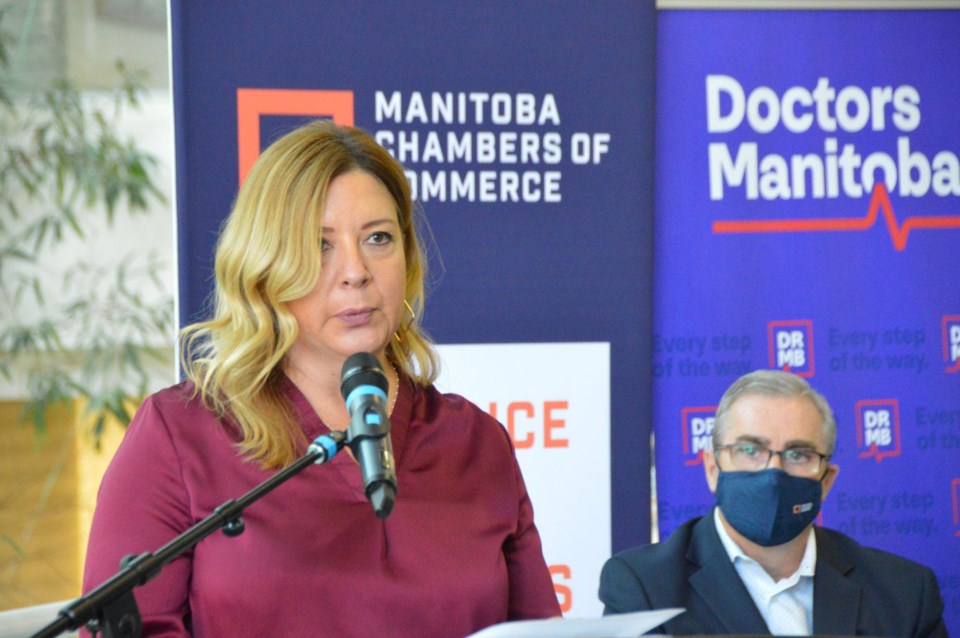While rural and northern communities in Manitoba continue to struggle to hire doctors, two organizations have come together and released recommendations they say could help bring more physicians to rural and remote communities, and help to keep them there once they are hired.
“Manitoba has one of the biggest physician shortages in Canada,” Doctors Manitoba president Dr. Candace Bradshaw said in Winnipeg Oct. 28, announcing that Doctors Manitoba and the Manitoba Chambers of Commerce have released a joint report with recommendations aimed at attracting and retaining physicians for rural and northern Manitoba communities.
And Bradshaw stressed that the problem will only get worse if more doctors are not hired and retained in many of those communities.
“This isn’t a new problem, but it’s one that’s on track now to get worse,” she said, adding that the organization is currently aware of a large number of physicians who are planning on retiring, leaving Manitoba, or reducing their practices in the next three years.
And according to Bradshaw, this should concern all Manitobans, because it will directly affect patient care in this province.
“A shortage of physicians means patients can’t always get the care they need when they need it, and close to their homes,” she said. “A lack of physicians has contributed to more rural ERs being closed this summer than ever before, and it’s left 150,000 Manitobans without a family doctor.
“And it’s led to more First Nations people leaving their communities just to access primary care.”
The report includes five recommendations as well as supporting actions, which include streamlining recruitment efforts, addressing physician burnout, and creating more and improved physical engagement and peer support.
And according to Bradshaw, if physician burnout in this province is not dealt with, she believes physicians will continue to leave positions at rural health-care centres.
“We have 50 per cent of physicians experiencing high levels of burnout, so let’s work together to tackle the root causes, which are systemic and institutional,” she said.
“This could include decreasing the administrative burden on doctors which takes them away from patient care. Paperwork is mounting for physicians and it’s killing them, so we need to look at what can we reduce there, or just cut out completely.”
The report also recommends allowing local communities and local chambers of commerce to play a greater role in recruiting and retaining physicians and their families in rural communities.
“Accessible health care is important to all Manitobans, including our members, and reliable, quality care is essential to rural and northern economies,” Manitoba Chambers of Commerce president and CEO Chuck Davidson said..
“Health care is indeed an economic issue because without a strong health care system we simply can’t support the attraction of new residents, we can’t promote tourism with confidence, and we restrict Manitobans’ ability to age in place.
“We are very pleased with the outcome of this process while acknowledging that there will be significant work required from a variety of system contributors.”
The organizations say the report has been submitted to the minister of health for the government’s consideration, and both have offered to advise the government on the implementation of the recommendations.
Recommendations to repair the physician shortage:
-Recruiting more physicians by expanding training, streamlining recruitment efforts, and identifying financial supports for transition to practice
-Finding efficiencies to free up physicians’ time for more patient care, including making it easier for physicians to consult other physicians to guide care
-Addressing physician burnout, the single biggest risk to physicians leaving practice, by reducing the administrative burden, reviewing on-call expectations, and improving physician engagement
-Retaining physicians in practice for longer with better peer support and mentorship, assisting with physician infrastructure costs, and enhancing the physician retention program
-Supporting the important role local communities and chambers of commerce can play in recruiting and retaining physicians and their families
— Dave Baxter is a Local Journalism Initiative reporter who works out of the Winnipeg Sun. The Local Journalism Initiative is funded by the government of Canada.




